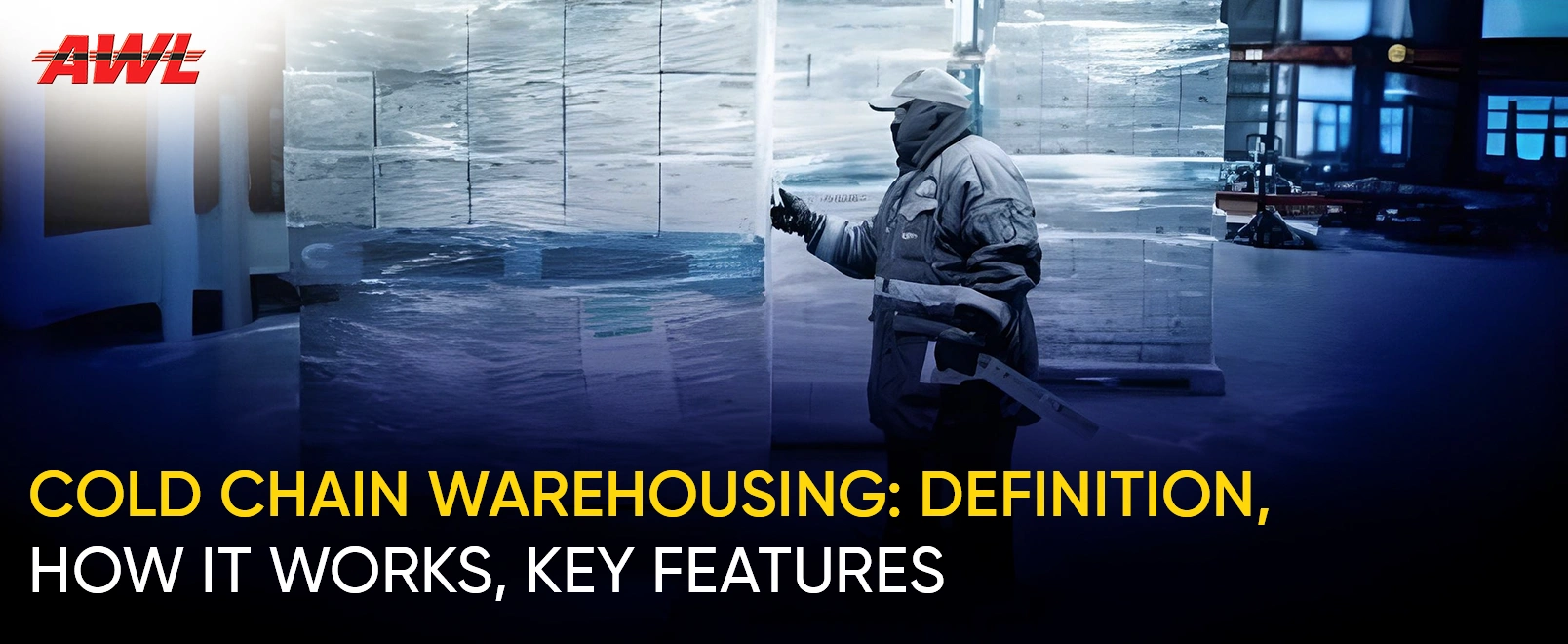

The transport and storage of temperature sensitive goods has become a vital logistic aspect in the present-day globalized supply chain environment. Pharmaceuticals, food and beverages, chemicals, and biotechnology industries are now dependent on systems capable of assuring the integrity of their products during the various stages of supply chain. This is where cold chain warehousing is needed. Cold storage solutions play a central role in maintaining safety, quality, and compliance, whether it is in the storage of the vaccines or the refrigeration of perishable food products.
What Is Cold Chain Warehousing?
Cold chain warehousing is based on the specialized storage of temperature sensitive products in storage facilities that are outfitted to provide particular environmental conditions, usually cold temperatures, essential to retain the efficacy and usefulness of the products. In contrast to the standard warehousing, they are constructed with the latest types of refrigeration technology, insulation, and surveillance equipment that ensure the correct temperature and humidity conditions.
Cold chain warehousing plays a vital role between production, distribution as well as retail. Temperature interruption can utterly destroy the integrity of the product, whether frozen meat products, milk products, or life saving drugs. That is why cold chain warehousing facilities are essential in ensuring safety and regulatory compliance.
How Cold Chain Warehousing Works
Cold chain warehousing works based on a chain of coordinated systems that treat and analyze maintaining constant cold temperatures during the storage process. This is how it usually happens:
1. Receiving and Inspection
Upon the arrival of temperature-sensitive goods at the cold chain warehouse, they are checked straight away to ascertain whether they are being transported under the necessary conditions. Any changes to desirable temperature ranges are reported, and rectifying steps are undertaken. This is the first step that helps in ensuring that the quality of the product is not jeopardized by any means before storing them.
2. Temperature-Controlled Storage
Cleared products are then transported to zones of controlled temperature. Warehouses are normally partitioned into numerous rooms with various ranges of temperatures, frozen (-18°C and below), chilled (0°C to 4°C), or ambient (approximately 20°C). Such areas are controlled 24 hours a day and monitored by digital sensors, automatic climate control systems.
3. Real-Time Monitoring
A key feature of modern cold chain warehousing is its reliance on real-time data collection. Using IoT-enabled devices and cloud-based platforms, warehouse managers can track temperature, humidity, air quality, and equipment performance. Alerts are generated in case of any fluctuation, ensuring immediate action can be taken.
4. Order Picking and Packaging
Before dispatch, items are picked from storage and packed in insulated containers or cold boxes that help retain the required temperature during transit. For instance, pharmaceuticals may be packed with gel packs or dry ice to ensure their stability during last-mile delivery.
5. Dispatch and Transportation
Transport vehicles used in cold chain logistics are also temperature-regulated. They are loaded directly from the cold storage to avoid any temperature fluctuation. The synchronization between warehousing and transportation is crucial to maintain a seamless cold chain.
Key Features of Cold Chain Warehousing
Cold chain warehousing is much more than just keeping items cool. The effectiveness of such a facility is determined by several technological and operational features:
1. Advanced Refrigeration Systems
Modern warehouses are equipped with high-efficiency compressors, evaporators, and air-circulation systems that ensure uniform cooling across storage chambers. Some even feature cascade refrigeration systems for ultra-low temperature requirements, such as those needed for certain biotech products.
2. Energy Efficiency and Sustainability
To combat high energy consumption, many cold chain facilities now adopt green technologies. Solar-powered refrigeration units, energy-efficient lighting, and thermal insulation materials are becoming standard practices to reduce the carbon footprint of cold storage.
3. Temperature Zoning and Compartmentalization
Cold chain warehousing facilities are designed with flexible zoning systems that allow for multiple storage environments within a single facility. This ensures that diverse products can be stored under optimal conditions.
4. Automated Inventory Management
Integration of warehouse management systems (WMS) helps streamline inventory tracking, reduce errors, and enhance throughput. Automation in cold chain warehousing helps reduce human exposure to low temperatures while improving operational efficiency.
5. Regulatory Compliance
From FDA to FSSAI and WHO-GDP guidelines, cold chain warehousing facilities must comply with stringent national and international regulations. This ensures product quality, public safety, and legal adherence.
The Importance of Cold Chain and its Logistics
The growth of e-commerce, international trade, and biologics in the pharmaceutical industry has driven the demand for robust cold chain infrastructure. A well-integrated Cold Chain and its Logistics not only protect product value but also reduce wastage, improve consumer confidence, and enable faster market access.
India, in particular, has seen significant investment in this space due to the growing need for food security and immunization programs. Companies like AWL India are at the forefront of offering end-to-end cold chain solutions that combine warehousing, transportation, and last-mile delivery—ensuring temperature integrity at every step.
Market Outlook: Cold Chain Warehousing and Logistic Market
According to industry estimates, the cold chain warehousing and logistic market in India is projected to grow at a robust CAGR in the coming years. This growth is fueled by rising demand for fresh produce, dairy exports, increased vaccine distribution, and expanding retail networks across rural areas.
Technological advancements, coupled with government initiatives like PM Gati Shakti and subsidies on cold storage units, are further propelling market expansion. As demand rises, companies that can deliver scalable, tech-enabled, and compliant solutions will gain a competitive edge.
Integrating Cold Chain Management & Logistics
For businesses to truly harness the benefits of cold chain infrastructure, it’s essential to integrate warehousing with transportation and last-mile delivery forming a comprehensive Cold Chain Management & Logistics system. This involves:
- Unified tracking systems for end-to-end visibility
- Data analytics to forecast demand and optimize inventory
- Predictive maintenance of cold storage equipment
- Strategic warehouse placement for regional and national coverage
By bringing all elements under one umbrella, AWL India ensures that clients enjoy a seamless, transparent, and reliable supply chain experience.
Conclusion
In a world where product quality, safety, and shelf life are paramount, cold chain warehousing has become indispensable. From maintaining vaccine potency to preserving perishable food items, the value it brings to the supply chain cannot be overstated. As the logistics landscape continues to evolve, investing in efficient cold chain systems is no longer optional—it’s a business imperative.
With advanced infrastructure, cutting-edge technology, and an unwavering focus on quality, AWL India is setting new benchmarks in the field of cold chain warehousing and logistics. As customer expectations rise and compliance requirements tighten, partnering with a trusted cold chain expert will be the key to long-term success.

John Smith
Digital Tech Head